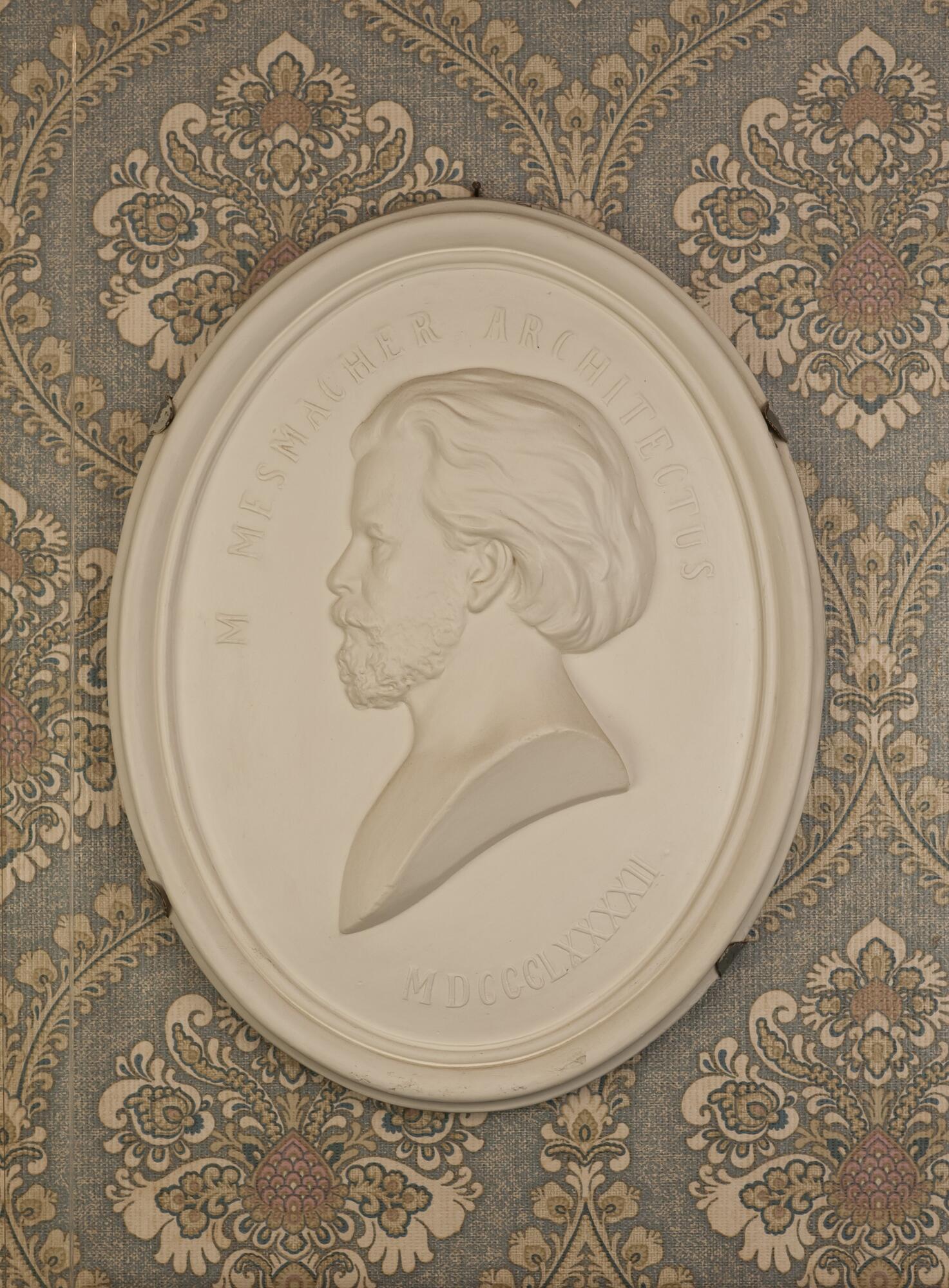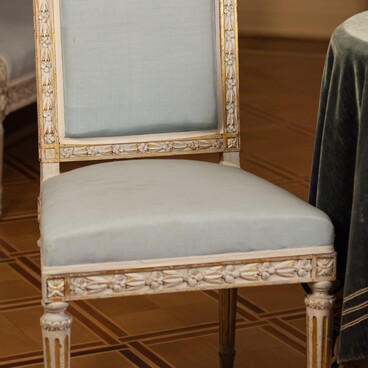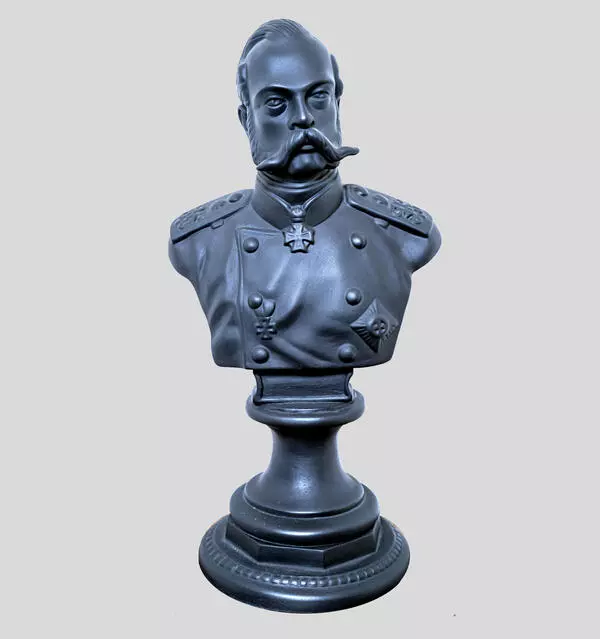Maximilian Egorovich Messmacher (1842-1906) was the author of the project of Massandra Palace that was built in 1902. In 1889, after having acquired the Massandra estate, Emperor Alexander III decided to reconstruct the palace. In 1891, Maximilian Messmacher was charged with the task of creating a new palace project.
The bas-relief portrait of its architect can be found on the wall of Massandra Palace’s lobby. It was made by an academician sculptor Matvey Afanasyevich Chizhov (1838-1916). This bas-relief is cast from the author’s mould that is kept in the museum of fine arts in Weimar, Germany.
Maximilian Messmacher was a famous architect of the second half of the 19th century. An academician and a Professor of the Imperial Academy of Fine Arts, he created of a number of projects for various buildings in Moscow and Saint Petersburg. In his lifetime he was renowned for fulfilling numerous building contracts for large structures, palaces, mansions, public buildings that were popular among citizens and guests of Saint Petersburg. As his talent was noticed by the Imperial Family, he started working for Grand Dukes and the Emperor as well.
Traits of a fine painter, designer, and architect were all inextricably linked in Messmacher. He was also a uniquely gifted graphic artist whose works can be found in the Hermitage and the Academy of Fine Arts.
In 1879 Messmacher was promoted director of Baron von Stieglitz’s Central School of Technical Drawing in Saint Petersburg and served in that capacity for the next 17 years. Under his direction, a coherent system of training for future designers and painters was developed. Messmacher himself devised the School’s charter and syllabus which were close to those of the Academy. The School’s students later engaged in decorating the interiors of Anichkov Palace, Massandra Palace, Baron von Stiglit’s School Museum and a number of Grand Dukes’ mansions. Messmacher proved himself to be a talented manager, master of museum business and a gifted teacher.
At the end of 1897 due to the conflict with Alexander Polovtsov, who was head of the School Board, Messmacher had to leave for Dresden, Germany, where he continued to work on architectural projects and teach architecture. He died in Dresden on 4 September 1906 and was buried at the Lutheran cemetery Johannisfriedhof.
The bas-relief portrait of its architect can be found on the wall of Massandra Palace’s lobby. It was made by an academician sculptor Matvey Afanasyevich Chizhov (1838-1916). This bas-relief is cast from the author’s mould that is kept in the museum of fine arts in Weimar, Germany.
Maximilian Messmacher was a famous architect of the second half of the 19th century. An academician and a Professor of the Imperial Academy of Fine Arts, he created of a number of projects for various buildings in Moscow and Saint Petersburg. In his lifetime he was renowned for fulfilling numerous building contracts for large structures, palaces, mansions, public buildings that were popular among citizens and guests of Saint Petersburg. As his talent was noticed by the Imperial Family, he started working for Grand Dukes and the Emperor as well.
Traits of a fine painter, designer, and architect were all inextricably linked in Messmacher. He was also a uniquely gifted graphic artist whose works can be found in the Hermitage and the Academy of Fine Arts.
In 1879 Messmacher was promoted director of Baron von Stieglitz’s Central School of Technical Drawing in Saint Petersburg and served in that capacity for the next 17 years. Under his direction, a coherent system of training for future designers and painters was developed. Messmacher himself devised the School’s charter and syllabus which were close to those of the Academy. The School’s students later engaged in decorating the interiors of Anichkov Palace, Massandra Palace, Baron von Stiglit’s School Museum and a number of Grand Dukes’ mansions. Messmacher proved himself to be a talented manager, master of museum business and a gifted teacher.
At the end of 1897 due to the conflict with Alexander Polovtsov, who was head of the School Board, Messmacher had to leave for Dresden, Germany, where he continued to work on architectural projects and teach architecture. He died in Dresden on 4 September 1906 and was buried at the Lutheran cemetery Johannisfriedhof.







